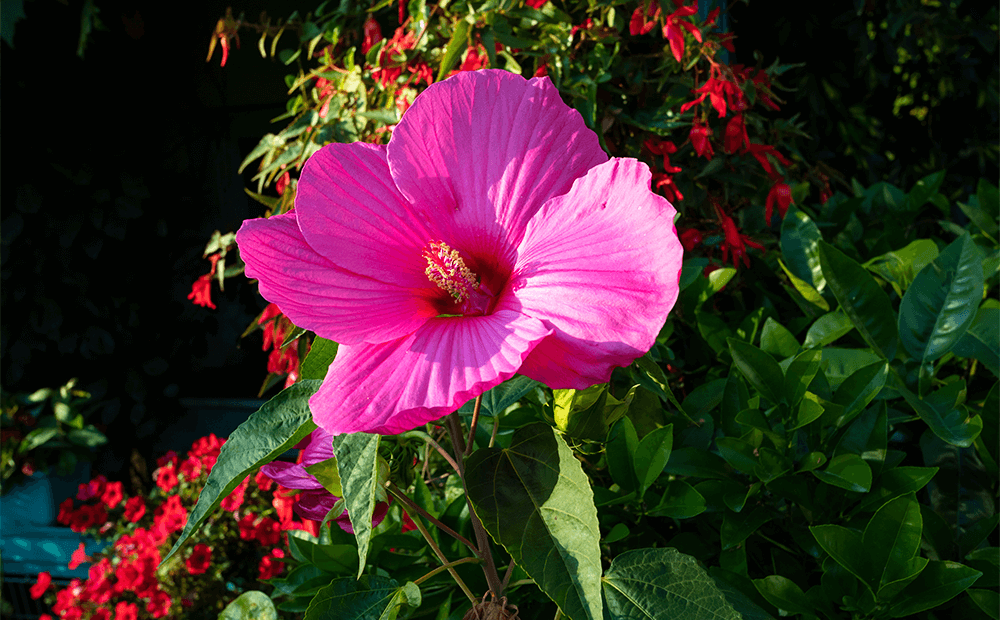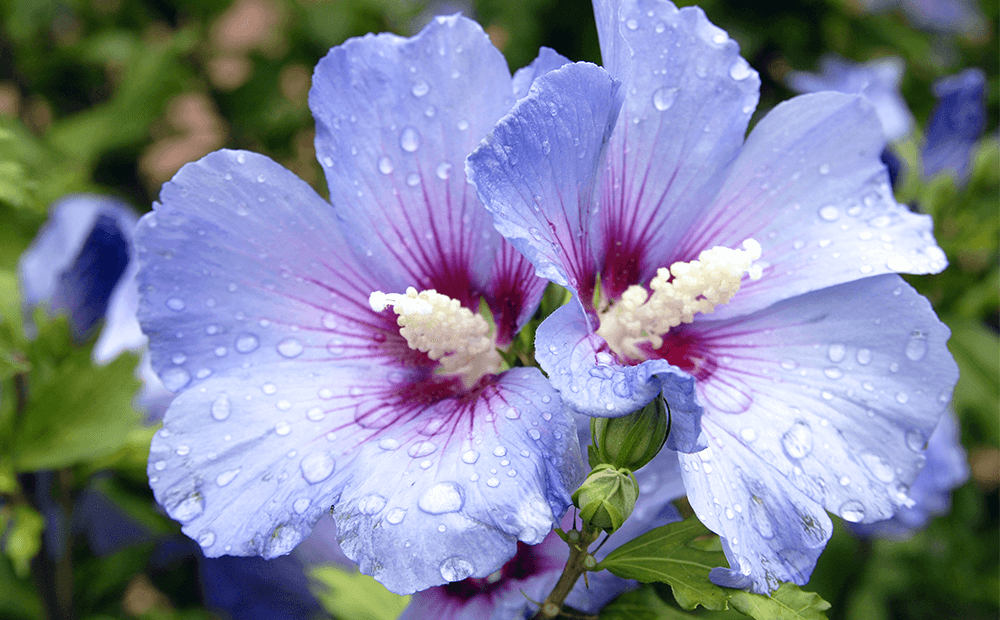HARDY HIBISCUS: CREATE A TROPICAL GETAWAY AT HOME
We're dreaming of sunny tropical vacations, too. Everyone could use some vacation time, but if you're not quite ready to travel yet, you can bring the tropical vibes to your home. There are plenty of plants that have tropical style, but nothing is as quintessentially tropical as hibiscus.
With the wide variety of hardy hibiscus that have been bred in recent years, there are some amazing ones you can grow right here in Indianapolis. While it is generally rated for zones 5-8, some have even been tough enough to survive in zone 4!
The bonus perk of hardy hibiscus is that they bring those tropical friends, hummingbirds, to the yard through the summer!
HARDY HIBISCUS PLANT PROFILE
In the rose mallow family, hardy hibiscus look very similar to tropical hibiscus, but they are better able to withstand more drastic temperature changes and climate variances than tropical hibiscus.
Rose of Sharon, with smaller flowers than hardy hibiscus.
Many people are familiar with rose mallows and may have memories of them as hibiscus-like flowers but on a much smaller scale. Those would be the shrub varieties called Rose of Sharon; the flowers are smaller and come in pink, purple, blue, or white.
Since gaining in popularity, breeding programs have been set up, and stunning hybrids with huge blooms have been developed. Now, you can get hardy hibiscus with flowers up to 10 inches across that come in variations of pink, white, lavender, and red.
Many may have streaks of another color on the petals, or an ombre style fade from one color to another or a dark-colored center with light petals. Hardy hibiscus will start blooming in mid-summer and keep on blooming right through to the first frost in the fall.
The bonus perk of hardy hibiscus is that they bring those tropical friends, hummingbirds, to the yard through the summer!
HARDY HIBISCUS CARE
This stunning perennial has a few care requirements, but they're not too difficult. These plants should be planted outside, in the ground. There are a few things to keep in mind that will help you provide the best care for your rose mallow.
They like consistently moist but not saturated soil, and are not tolerant of any drought conditions.
Full sun is a must.
They are slow to get started in the spring but grow incredibly fast once the soil heats up.
If you head out on holiday in mid-summer, you may well come home to a plant that's twice the size it was when you left.
In the tropics, hibiscus prefers to grow in fairly damp locations, near rivers and lakes. But while they need consistent moisture, they don't want to be standing right in water all the time. Make sure your hardy hibiscus is watered consistently through the summer and well into the fall to ensure the best blooms. It's best if it heads into winter with well-hydrated roots, so keep watering it regularly.
Pruning is an annual part of hardy hibiscus care. In the fall, it's best to leave the shrub standing. The tall canes of the plant will catch the leaves when they fall, helping to insulate the plant's crown over winter. Before new growth starts, you can take loppers and chop those stems back to 5-6 inches tall in early spring. You can also apply a slow-release fertilizer in the spring when you prune it. Hardy hibiscus pushes up new growth from under the crown, not from old stems.
Turn your backyard into a tropical oasis of stunning dinner-plate size flowers by adding a hardy hibiscus or two to your landscaping. If you have a spot that gets lots of sun but the soil stays quite damp, that would be perfect. Even if you don't have a damp place, apply a layer of mulch over the root zone, and coil a soaker hose around your hibiscus.
Watering in the early morning is best, and remember, a long, deep soak less frequently is better than a shallow soak every other day. Hardy hibiscus may start to drop leaves if they don't get enough water, but if you get back on track with deep soaking, they'll put out plenty of new leaves again.
Stop by the garden center today to see what beautiful varieties are in stock.






